All About Yarn for Knitting & Crochet
If you are curious about yarn for knitting, you are in the right place. We will discuss different yarn fibers, yarn ply, and how to read a yarn label. Additionally, this post will address yarn weights, including Lace Weight, Fingering Weight, Sport Weight, DK Weight, Chunky Weight, Bulky Weight, and Jumbo Weight. You will also have the opportunity to download a Free Yarn Weight Chart.
This discussion of yarn for knitting follows an in-depth chat about Knitting Needles. If you are new to knitting or just curious, make sure you pop over to read that.
So, you just popped into your favorite LYS because you want to knit a baby blanket for your best friend’s new grandson. OR, you’d like to try your hand at knitting a chunky Christmas stocking! Maybe you would like to knit a lovely, lacy shawl for yourself.
In most cases, each of these projects would necessitate a different yarn. So, how do you choose? Your two major decision points are yarn fiber and yarn weight. Let’s talk about each of them.
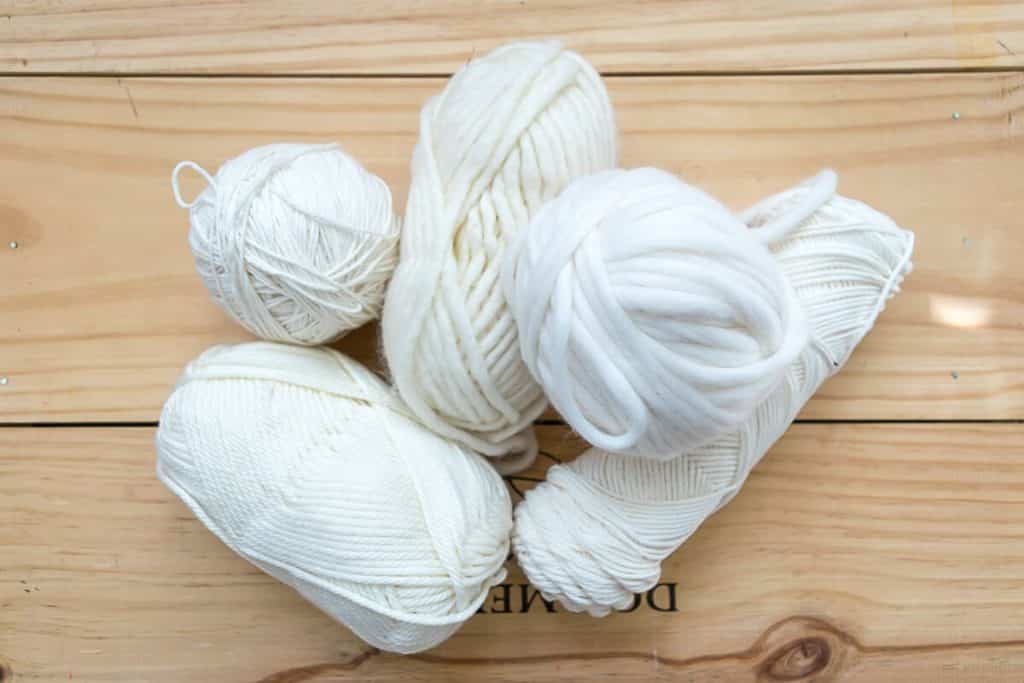
Table of Contents
Some of these links may be Amazon affiliate links and I may earn a small commission from the sale of these products to help defray the costs of operating this site, but the price you are charged is not affected. You can see my full disclosure policy here.
Fibers Used to Make Yarn
The textile known as yarn results from fibers that are twisted together. The yarn’s characteristics and qualities depend on the fiber from which it is made.
Animal-Based Fiber Yarn for Knitting
- Sheep’s Wool is the fiber that results from shearing sheep. It is a warm fiber, but can be itchy, especially for sensitive skin. While it easy to work with and has a good price point, it can be itchy and does pill over time. Handwash your 100% wool garments.
- Merino Wool comes from the coat of the Merino Sheep and is lighter and less itchy than ‘regular’ wool.
- Angora yarn is made from the coats of an Angora rabbit. It is lightweight, yet warm and not itchy. In fact, Angora is up to 7 times warmer than sheep’s wool. Along with cashmere, it is one of the most expensive yarns. If you knit with Angora, choose a wood or bamboo needle as the yarn is slippery. Dry clean or wash in cold water your Angora items.
- Mohair yarn comes from the long, silky coat of the Angora goat. It is soft, fluffy and not as itchy as sheep wool and creates a bit of a ‘cloud’ from the long, soft fibers. Given the elasticity of the fibers, Mohair resists wrinkling and sagging. It is more expensive than wool and is often blended with silk or wool to add weight. Dry Clean or gentle hand wash iyour mohair garments.
- Cashmere is the fine, luxury wool that comes from the undercoat of the Kashmir goat. The low bulk and high loft of Cashmere knits up some of the warmest, softest and most comfortable garments and accessories. One attribute of Cashmere is that it actually softens with wear, however it is prone to pilling. Dry cleani your Cashmere garments.
- Alpaca yarn creates a soft, lightweight but warm garments with no scratch. This fiber comes from the coat of the Alpaca and is hypoallergenic, making it a great yarn for knitting garments for those sensitive to wool. Dry Clean your Alpaca garments.
- Silk yarns and fibers are unravelled from a cocoon of the silkworm. Luxurious and expensive silk yarn creates a fabric with a lovely drape and gentle sheen that is hard to replicate. Dry-clean or gently hand wash your silk garments.
Synthetic Fiber Yarn for Knitting
- Polyester Novelty yarns like chenille, faux fur and ribbon are often made from Polyester. Polyester is also often blended with natural fibers to make a more durable and easy to care for yarn. Many feel that polyester feels scratchy and won’t show stitch definition well. One of the benefits of polyester yarns is that it is machine washable.
- Rayon, Viscose and Modal are a man-made fiber manufactured from regenerated wood pulp cellulose. These fibers share the same characteristics of polyester in terms of durability and are work up to a cool and drapey fabric, perfect for hot weather. Rayon is not very elastic and loses its shape over time and is typically hand washed.
- Nylon was orginally manufactered as an alternative to the more-expensive silk fiber. Like Rayon, it is smooth, shiny and cool to the touch. You can machine wash your Nylon items.
Plant-Based Fiber Yarn for Knitting
- Cotton This very common plant fiber is fairly inexpensive. Garments and accessories made with cotton are suitable for year-round use, making it a very versatile yarn choice. Yarn made from cotton creates soft, light and breathable items.The smoothness of the fiber shows a good stitch definition. Cotton yarn is also known to be strong, durable, and have excellent water absorption properties with short drying times, making it great yarn for knitting for washcloths, dishcloths and the like. The downside of cotton is that it is not elastic. Most cotton garments and accessories can be machine washed.
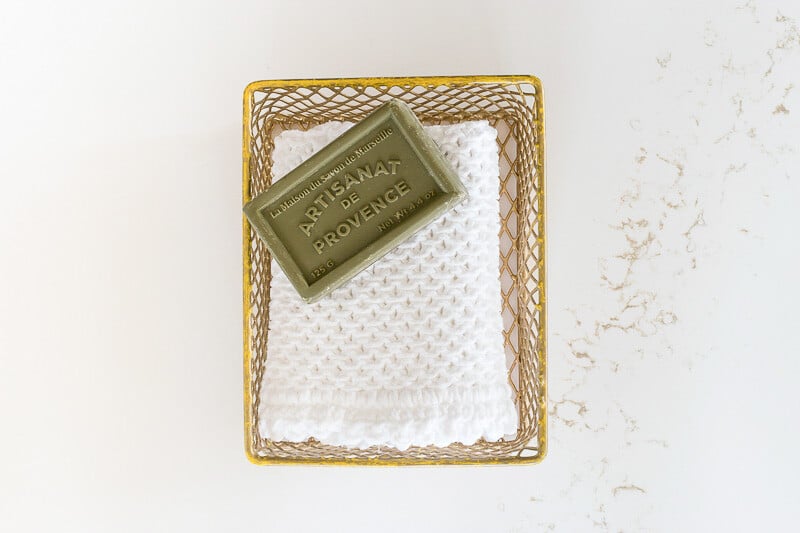
- Bamboo is a wonderful fiber that is also an environmentally friendly option; bamboo can be harvested without killing the plant. Garments knit with bamboo yarn will be cool and lightweight with a nice drape. Most garments knit from bamboo can be machine washed on the gentle cycle.
- Linen, Hemp and Flax Like their better know plant fiber cousin, cotton, these three fibers create cool and lightweight garments with good stitch definition. And like cotton, these fibers lack elasticity so look for a blend if you want any stretch to your project.
Yarn Weights
So, you’ve nailed down the fiber you want to use, but what weight should you choose? More often than not, your pattern will specify the weight of yarn to use. But if you would like to substitute or create your own pattern, knowing the different yarn weights is critical.
How is yarn weight determined?
The diameter or thickness of the yarn strand determines yarn weight.
In fact, if you have lost the label and are unsure about a yarn weight that is in your stash, you can figure it out with just a pencil and a ruler. Wrap the yarn around your pencil at a gentle tension, not too tight or too loose. The wraps should lay side by side without any overlap or large gaps between strands. Then count the number of wraps within one inch, and you get a fairly accurate sense of the weight. Use the free, printable Yarn Weights chart to help you figure it out.
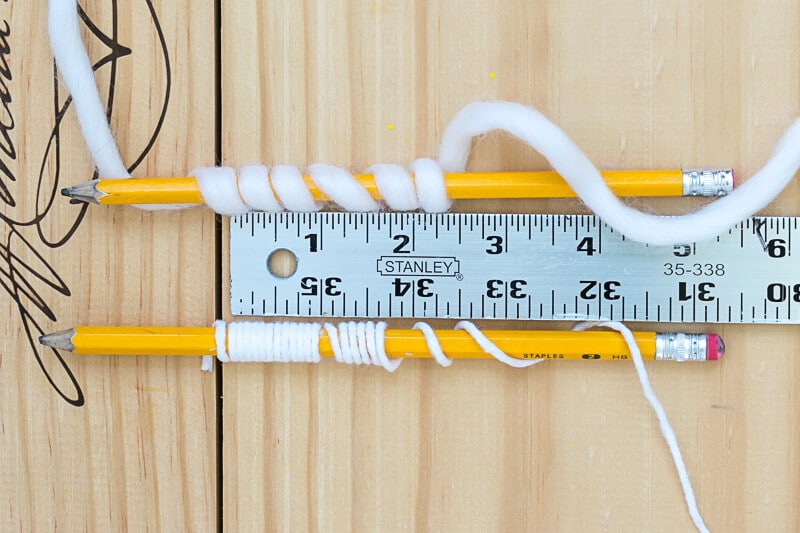
In the image above, the top yarn has 3 wraps per inch. According to the Yarn Weight Chart, this top yarn is a Jumbo Weight Yarn. The bottom yarn has 12 wraps per inch, making it a Worsted Weight Yarn.
The fiber used does not determine yarn weight. You will find all the fibers listed above used in every weight of yarn.
One caveat, you will see the ranges given because yarn thicknesses are on a spectrum from thin to thick. So bear in mind that this is not a hard and fast science.
Crafts Yarn Council
The Craft Yarns Council is a non-profit group of leading yarn companies, accessory manufacturers, magazines, book publishers, and consultants in the yarn industry whose goal is to educate and foster the yarn, knit, and crochet communities. Together, they set up a series of guidelines and symbols to bring uniformity to yarn, needle and hook labeling, and patterns, books, and magazines.
This free, downloadable Yarn Weights Chart is available in the Subscriber Library for all subscribers. If you have forgotten the super-secret password, check your last Monday Musings email, towards the bottom of the email. Or, if you prefer, click the button below to have the Yarn Weights Chart appear automagically in your email inbox.
The CYC put forth the standards, the Yarn Weight Symbols, and the gauges shown in the Yarn Weights Chart below.
Columns of this Yarn Weights Chart.
Let’s take a moment to explain the columns of the Yarn Weights Chart.
The first column, YARN WEIGHT SYMBOLS & CATEGORY, shows the skein of yarn symbol you often see on your yarn label. This symbol is fairly universal and helps you quickly determine the yarn weight.
The second column, TYPES OF YARN IN CATEGORY, gives some familiar names you might be familiar with for that yarn weight.
The COMMON KNIT GAUGE RANGE is just that. Given that yarn and the recommended needle, you should achieve that indicated number of stitches over 4″. This gauge assumes you knit in stockinette.
The next two columns in the Yarn Weights Chart show the SUGGESTED NEEDLE range sizes in both US size and millimeter.
WRAPS PER INCH will help you determine the weight of your yarn if you’ve lost the label.
And finally, RECOMMENDED PROJECTS gives you suggested projects that would be suitable for this yarn weight.

Different weights of yarn for knitting
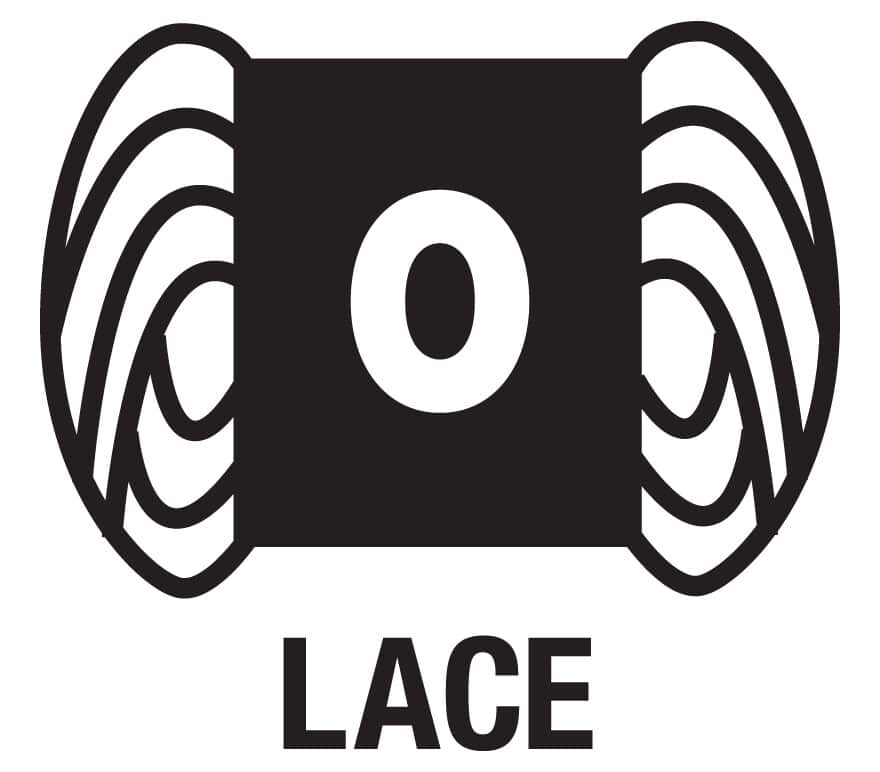
Lace weight yarn is the lightest weight of yarn. As the name implies, it is perfect for making lace and other delicate openwork designs. Consider lace weight yarn for a lightweight and lacy shawl or wrap.
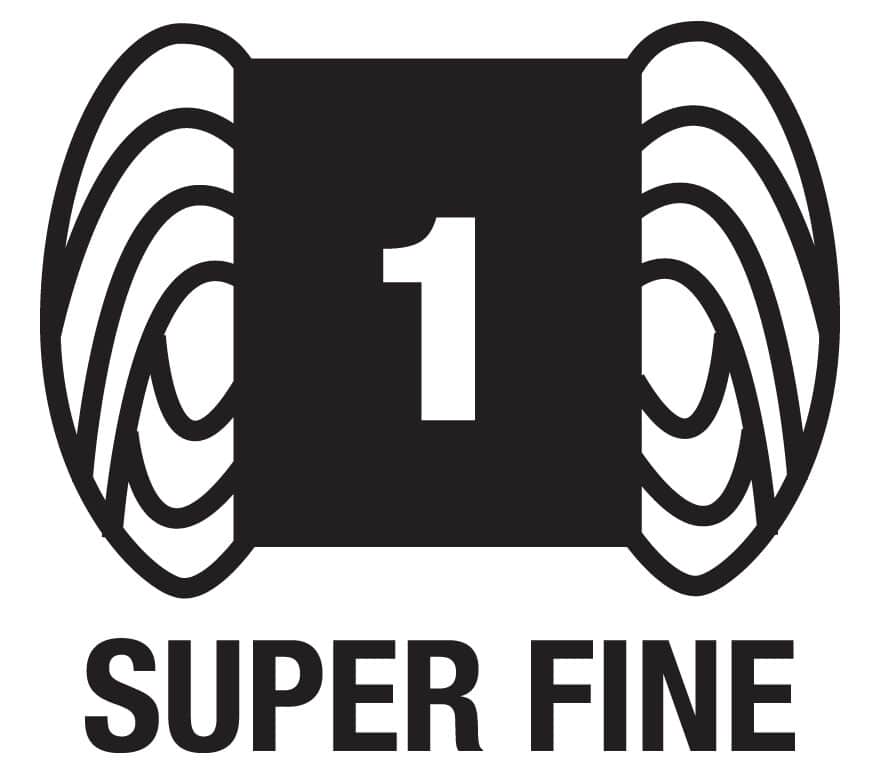
Also known as fingering weight and light fingering weight, these yarns are just a tad thicker than lace yarn and suitable for very similar projects with the addition of some baby clothes. You might hear fingering yarn referred to as 4-ply yarn and light fingering yarn referred to as 3-ply yarn, as well.
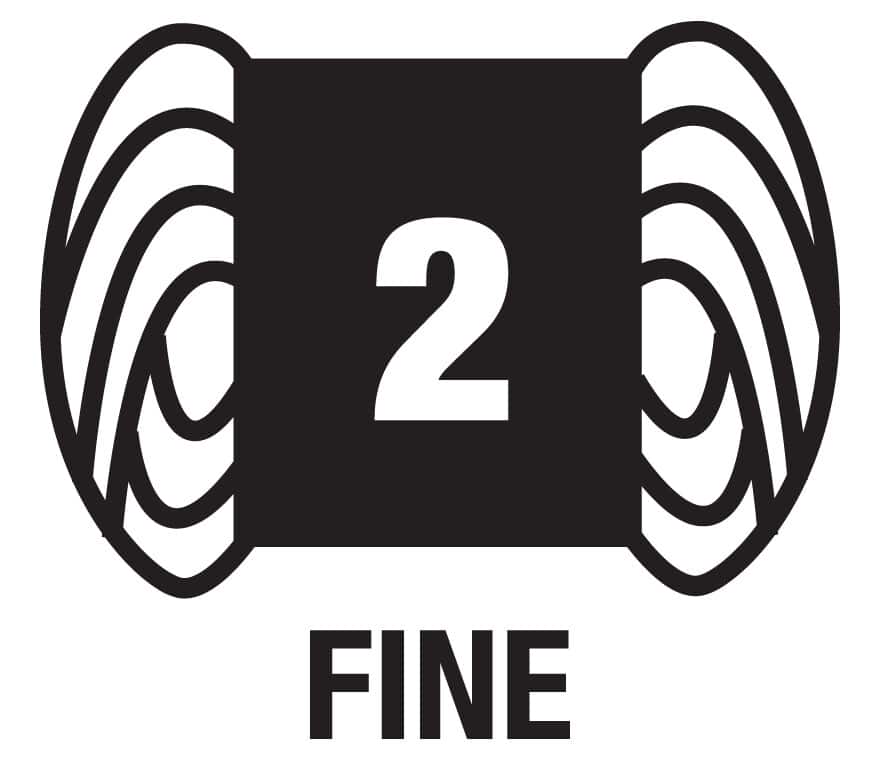
Commonly referred to as Sport Weight yarn, this semi-delicate yarn sits between DK weight and Fingering weight. Think of using Sport weight yarn for baby clothes, socks, shawls, scarves, lightweight sweaters, and cardigans. Oftentimes you can interchange Sport Weight and DK Weight yarn. Being slightly heavier than fingering weight yarn, sport weight yarn is wonderful in colorwork and textured stitch patterns.
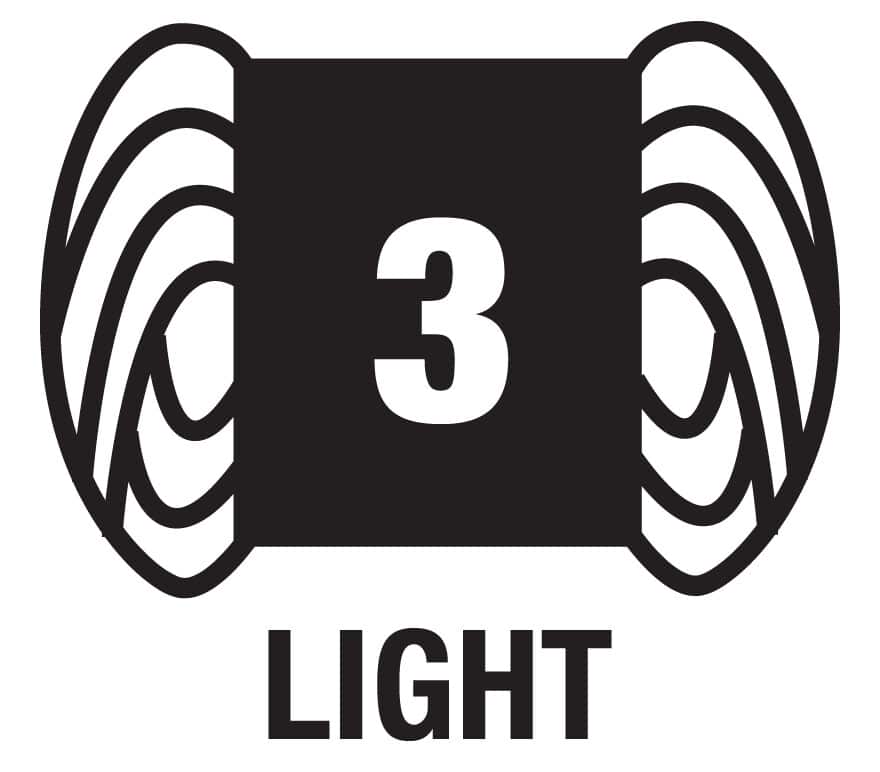
Most often referred to as DK (Double Knitting) Weight Yarn, DK sits between Worsted and Fingering and offers the warmth of worsted and the drape of fingering. It is perfect for sweaters, cardigans, shawls, gloves, and children’s wear. As we mentioned earlier, you can typically swap DK weight yarn for Sport weight yarn.
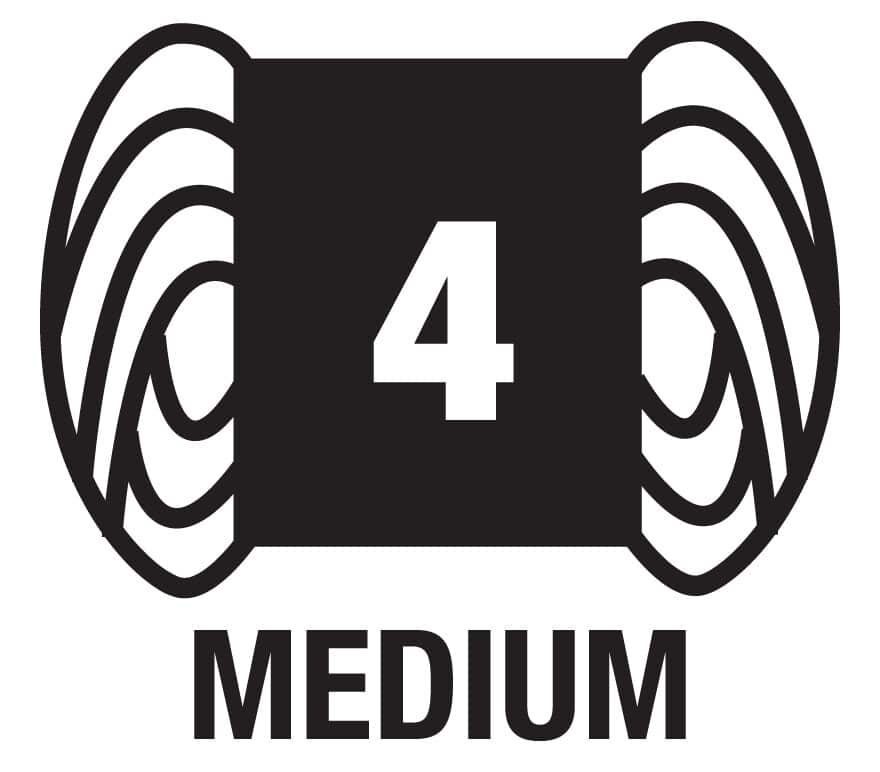
Worsted Weight and Aran Weight Yarns comprise this medium-weight yarn category. While often interchangeable, Worsted is a finer yarn than Aran, also referred to as Heavy Worsted. Worsted works up quickly and typically still has a nice drape. Knit a lovely worked in a warm, chunky cable knit sweater in Aran or Heavy Worsted yarns.
Worsted Weight Cotton was used for this Argyle and Diamond Baby Blanket Pattern.
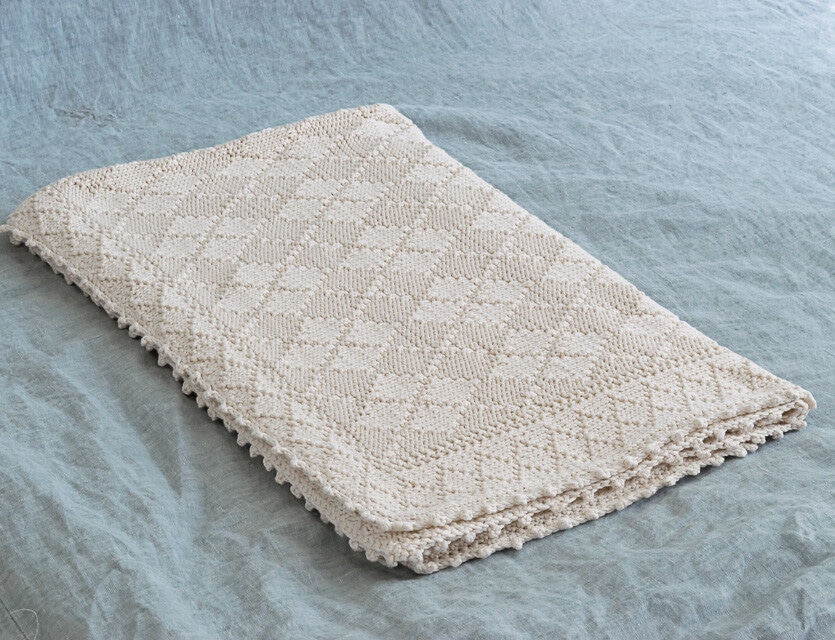
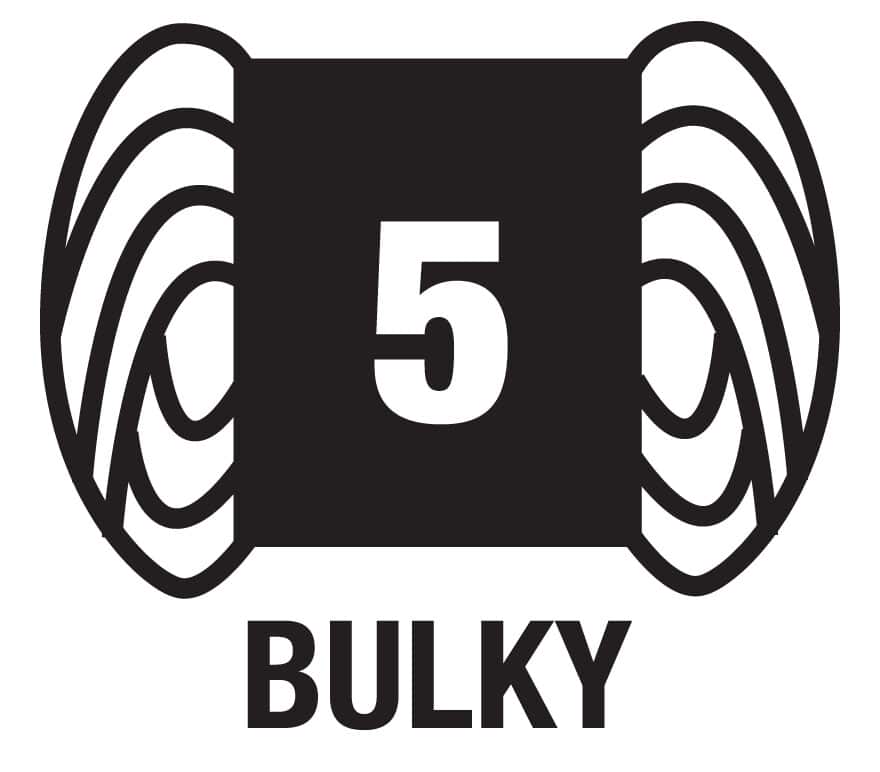
Commonly referred to as Chunky or Bulky yarns, if you are looking for a quick knit, this is your yarn weight. Cozy sweaters, stockings, chunky hats, scarves, cowls, and blankets knit quickly with a chunky yarn gauge of 3-3.5 stitches per inch.
This sweet Rosettes and Ruffles Baby Blanket was knit with Chunky cotton yarn.
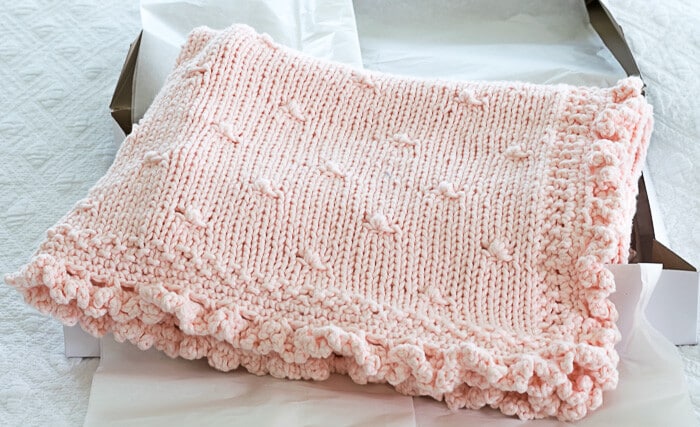
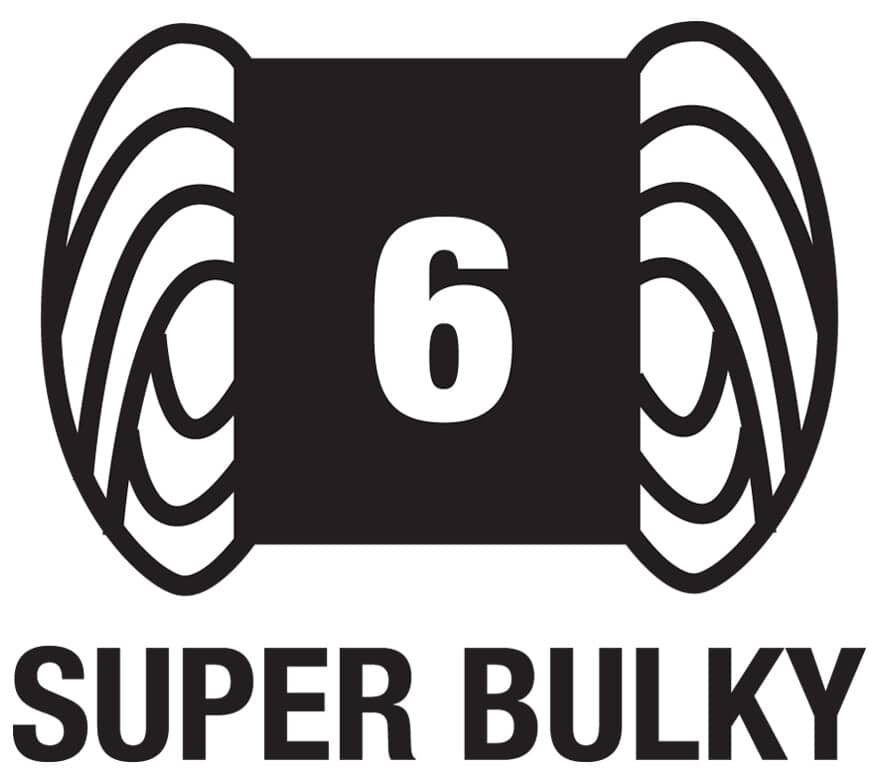
Super Bulky yarns are just that much thicker than Bulky yarns, knitting up very quickly. A nice wool blend or chenille chunky sweater or blanket is the perfect remedy for a cold day.
One of my all-time favorite blankets is this Half-Linen Stitch Blanket with a Faux Fur Trim. I used Super Bulky yarn to knit he body and faux fur trim.
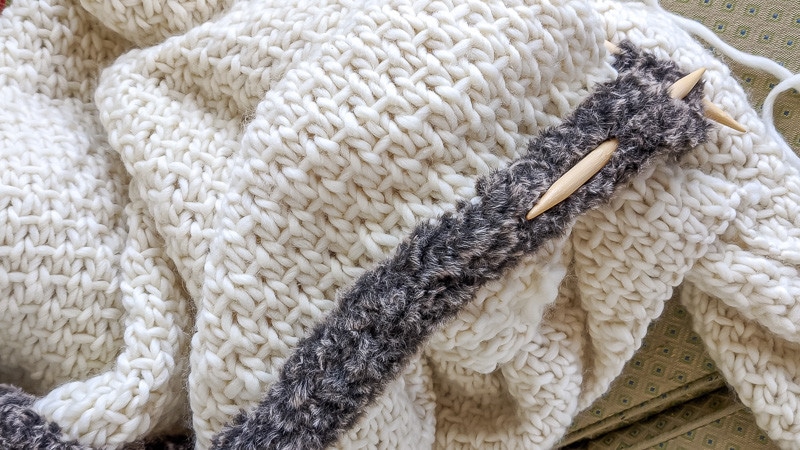
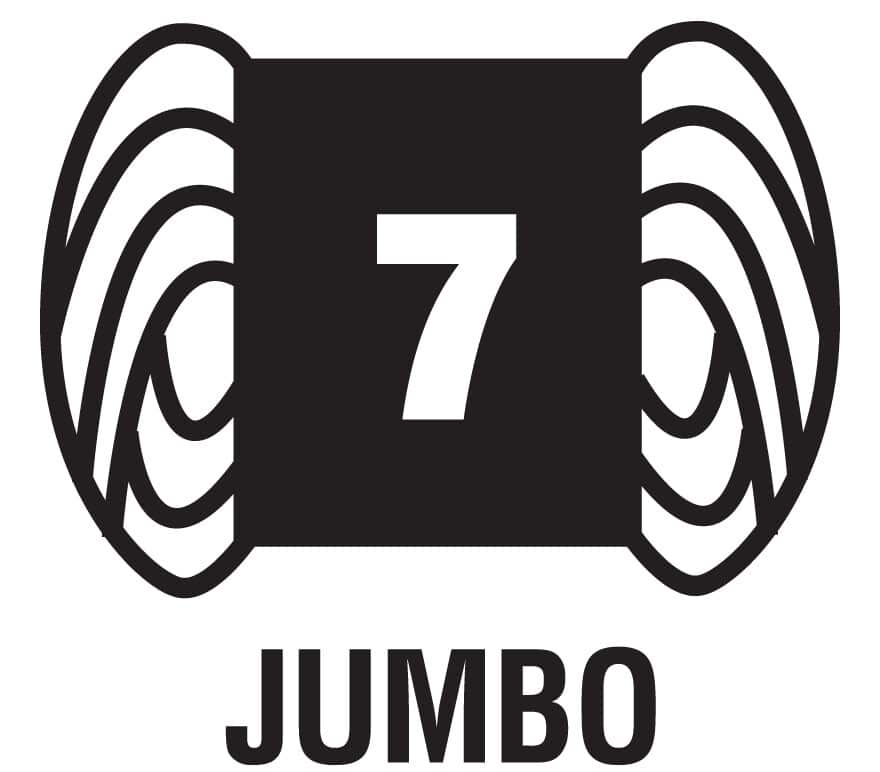
A Jumbo yarn is the one for you if you are interested in arm knitting. You can start and finish a blanket or throw within a day with a Jumbo Weight yarn.
What is Yarn Ply and Why You Want to Know
Just for clarification, this discussion of yarn ply has nothing to do with the name given certain yarns in some countries. If you look back up at #1, in the UK and Australia light fingering-weight and fingering-weight yarn are often referred to as 3-ply and 4-ply yarn, respectively.
For this discussion, yarn ply is simply the number of strands twisted together to make the yarn. In the image below, the yarn on the left is 1-ply; next to it is a 2-ply yarn and a 4-ply yarn.

Ply & Stitch Definition
That being said, why should you be curious about yarn ply? Well, let’s say you are planning to knit a gorgeous cable-knit sweater, and you have a choice between 1-ply or 4-ply yarn; which should you choose?
The more plies that yarn has, the more durability and stitch definition your knit project will have. This results from the plies being twisted together tighter than single or 2-ply yarn.
Ply & Pilling
Additionally, the more plies in yarn, the stronger, denser, and more durable the yarn. This stronger, denser, more durable yarn is much more able to resist pilling, and Lord knows we could all use less pilling!
Cabled Yarn
Plied yarns that are then plied together create cabled yarn. Specifically, a single plied yarn is spun in one direction and then plied with another single in the opposite direction. Then multiple plies are plied together in the direction that the initial single plies were spun.
This process creates a very sturdy yarn that resists pilling and knits up with a fantastic stitch definition.
How to Read a Yarn Label
Yarn labels have been evolving since I first started knitting, due largely to the role that the Craft Yarns Council is playing. Many newer yarns have all the information you will need, while some still make you work for it!
Most yarn labels will provide the following information:
- yarn weight symbol
- yardage
- weight
- recommended knitting needles and crochet hook
- color name/color
- dye lot
- gauge
- washing instructions using symbols
- fibers
Let’s look first at the label on this Paintbox Cotton DK yarn from Lovecrafts. Every piece of information you could want is on this label. From left to right, you have the weight, yardage, and fibers in the yarn. At the bottom left, they indicate that this is a Light Weight #3 yarn. Color, color number, and dye lot are indicated next. Pay attention to dye lot when purchasing multiple skeins of yarn.
The next bits of information show the recommended knitting needle and crochet hook size, as well as the gauge you should expect using that needle size. Finally, the manufacturer has included the cleaning icons in addition to the definitions of those icons.
Let me say this is a top-level yarn label!
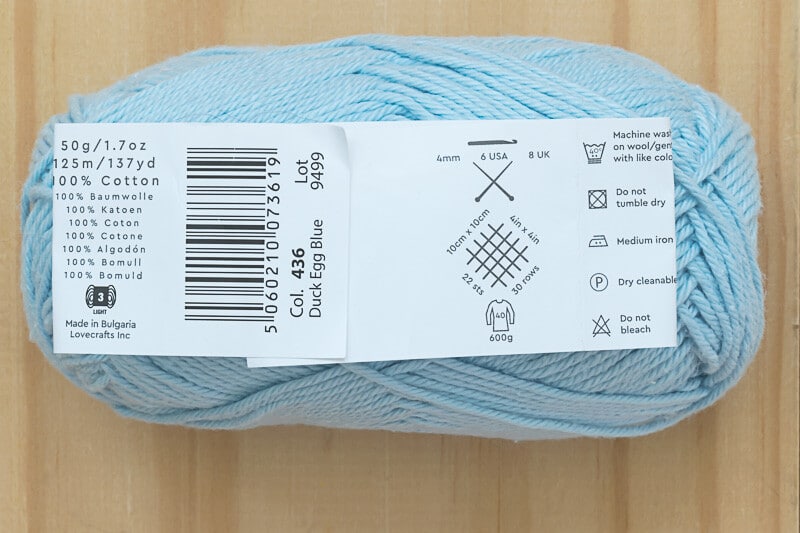
So, now let’s look at this Lana Gross yarn that I just purchased within the past month. As Lana Grossa is headquartered in Germany, the label uses universal symbols and metric measurements. I know that 10 x 10 cm equals 4 x 4 inches, so I can tell that I will get a gauge of 4 stitches/inch (16 stitches/4 inches).
But let’s look at the needle size…what measurement do you think that is? If they had indicated the Yarn Weight Symbol, that would help me figure it out, but they didn’t. So, I need to do a little more sleuthing. Looking at my Yarn Weights Chart, I can see that a 4″/inch gauge is associated with a Worsted Weight yarn. And in looking across the #4 Medium row, I can see that 4.5 – 5.5mm needles are recommended. So as a US knitter, I can deduce that this yarn would use a US 7 – US 9 needle.
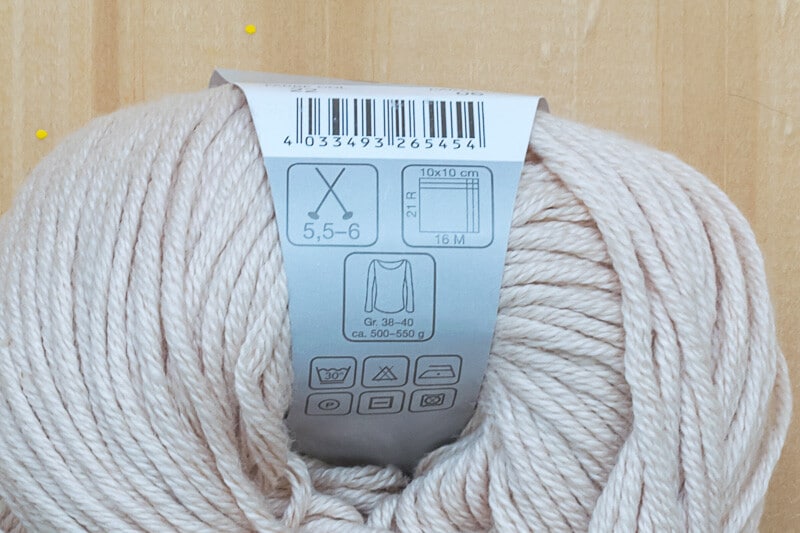
So my friends, tell me, have I forgotten to discuss something about yarn for knitting? My goal is to make this as comprehensive as possible, so do chime in if I have left something out. And for my experienced knitters, did you learn something new today?
If you want to learn how to knit or are looking to brush up on your knitting skills and knowledge, pop over to the How to Knit page, which houses all of the posts that teach knitting skills. Or, you could go ahead and visit each one by clicking the links below.
All About Knitting
- All About Yarn, including different fibers and weights, how to read a yarn label, and a Yarn Weights Chart
- All About Knitting Needles, including material, sizes, styles, and a Needle Conversion Chart.
- How to Cast On Using the Long-Tail Method, including calculating how much yarn is needed to cast on and how to make a slip knot.
- How to Knit the Knit Stitch
- How to Knit the Purl Stitch
- How to Knit the Seed Stitch
- How to Bind Off, including how to weave in your loose ends.
- How to Read a Knit Pattern, including a Common Knitting Abbreviations Chart.
- This simple Garter Knit Dishcloth will let you put all your new skills to good use!
- How to Block Your Knitting.
- Common Knit Errors; How to Prevent or Diagnose and Fix Them
- Join yarn using the Russian Join
- How to seam pieces of knit fabric with the Mattress Stitch (for sweaters, tops, pillows, etc…)
- How to Knit in the Round with Circular Needles
- How to Knit in the Round with Double-Pointed Needles
- How to Knit in the Round using the Magic Loop Technique.
- Organize Your Knitting with these free printables.
- Check out our Gift Ideas for Knitters.
To refer back to this post about Yarn, Yarn Weights, Yarn Fibers and Yarn Labels, bookmark this page or pin the following image.
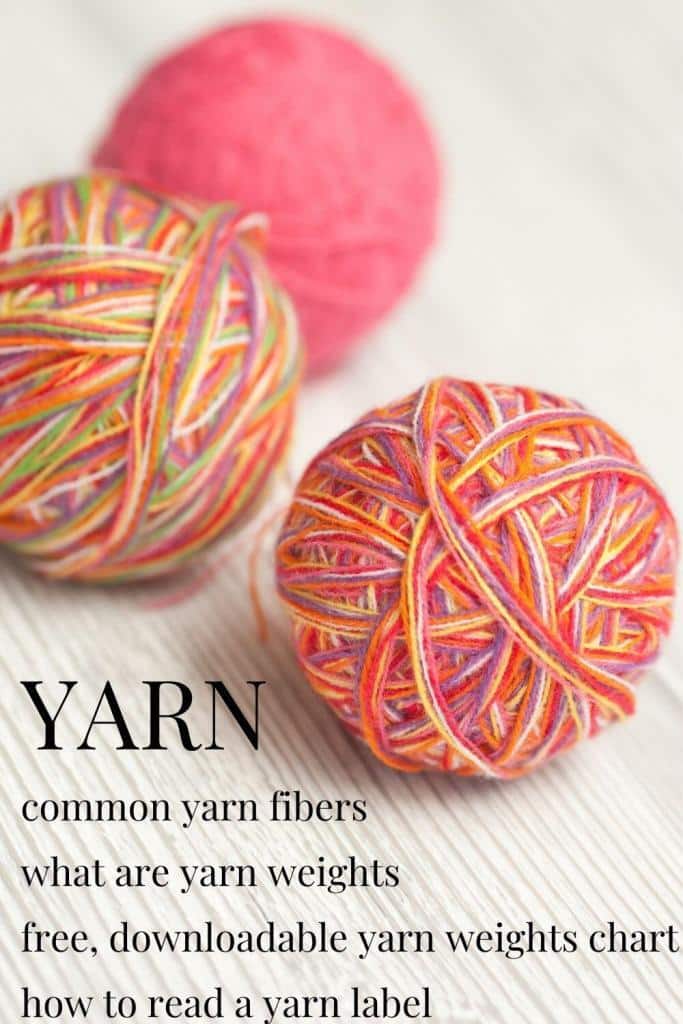
Thanks so much for spending a few minutes of your busy day with me!
To ensure you don’t miss future content, pop your email in the pale green box on the right or click here. I usually send one email weekly, so I won’t inundate your inbox. I’m sensitive to an overflowing email inbox!
We will only use your email address to send you emails, no more than 1-2 weekly. In addition, you will have access to my growing library of knit & crochet patterns and other printables. Check back often as this library will continue to grow. You can unsubscribe anytime by emailing me or clicking on the “unsubscribe” link at the bottom of all emails.
And you can access many of the products I refer to on my Nourish and Nestle Amazon Page. You can access it here.
So, if you’d like to participate in the ‘subscriber benefit’ action, simply subscribe to Nourish and Nestle here or use the form on the right sidebar. It’s slightly towards the top.
I have sent all my subscribers the link to the Subscriber Benefits Library. If you missed it or misplaced it, let me know.
Until next time…


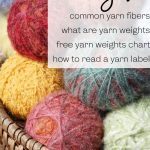
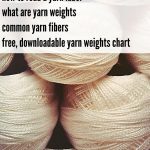
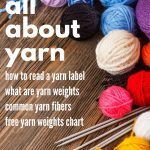
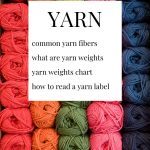
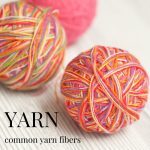
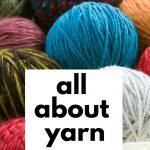
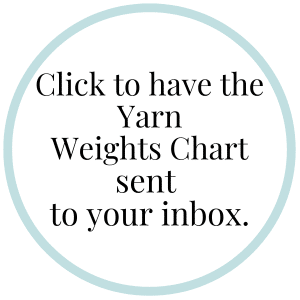
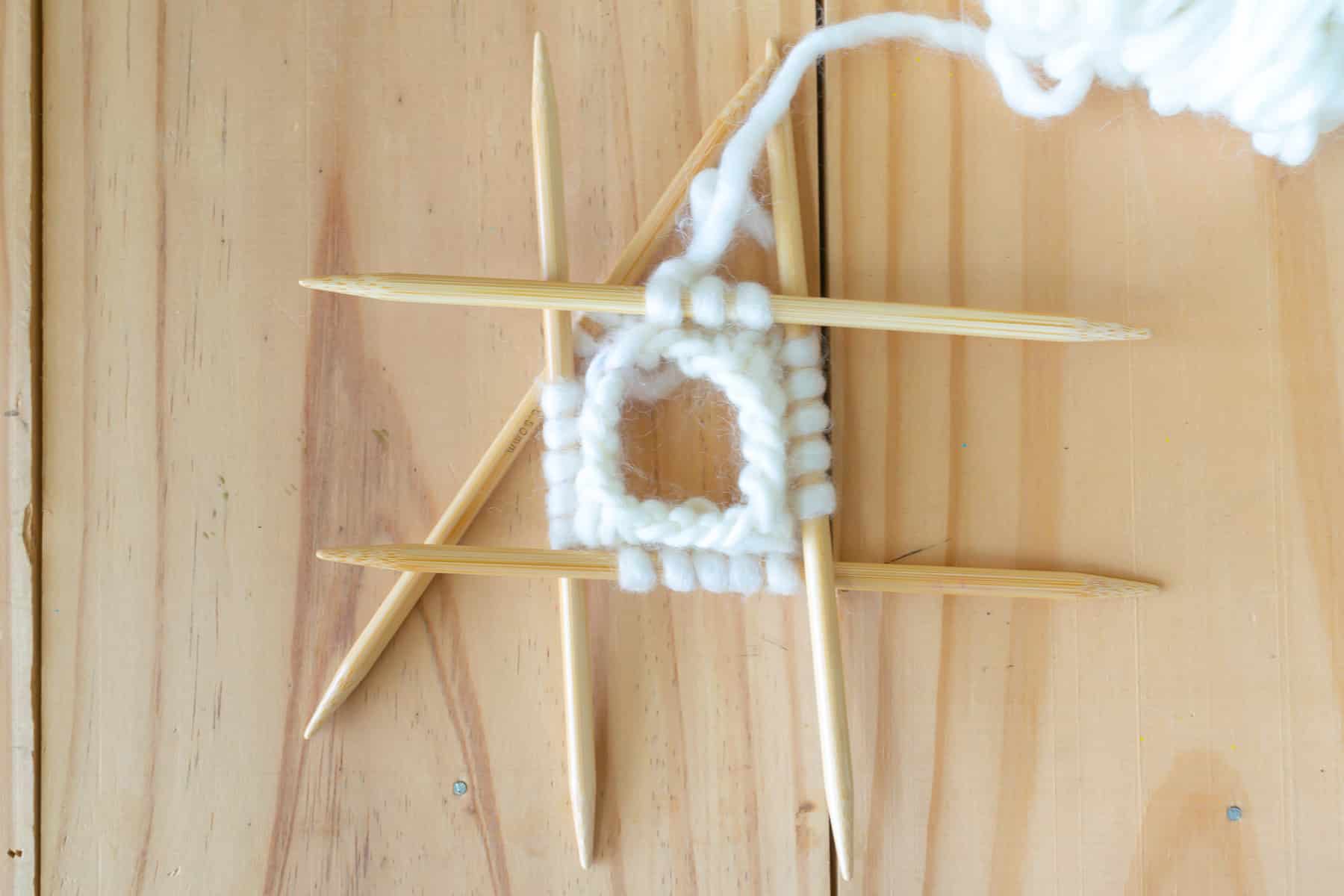

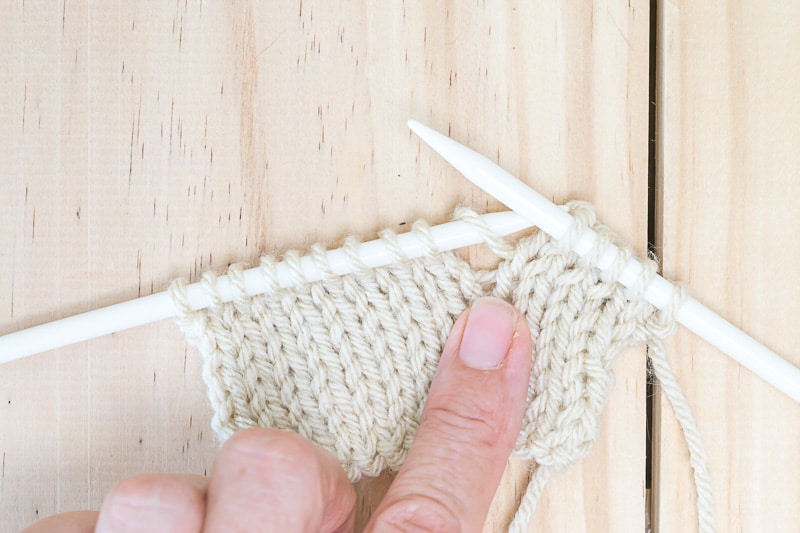
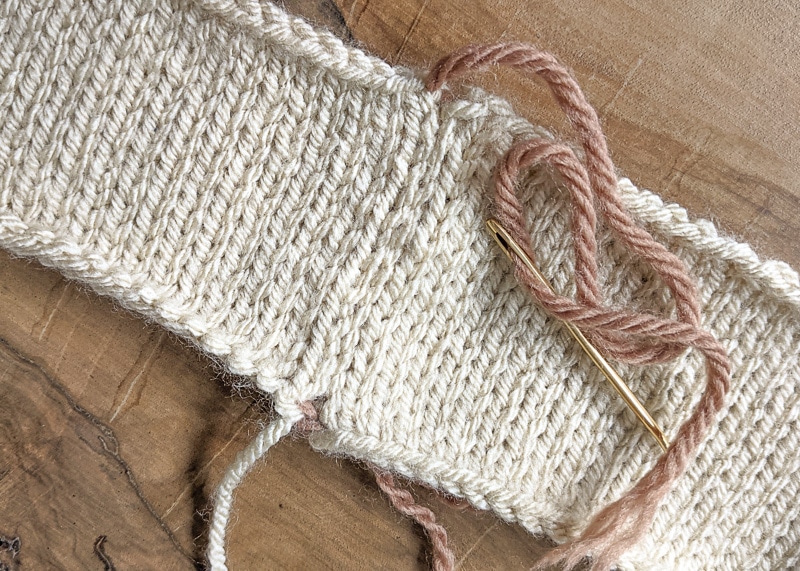
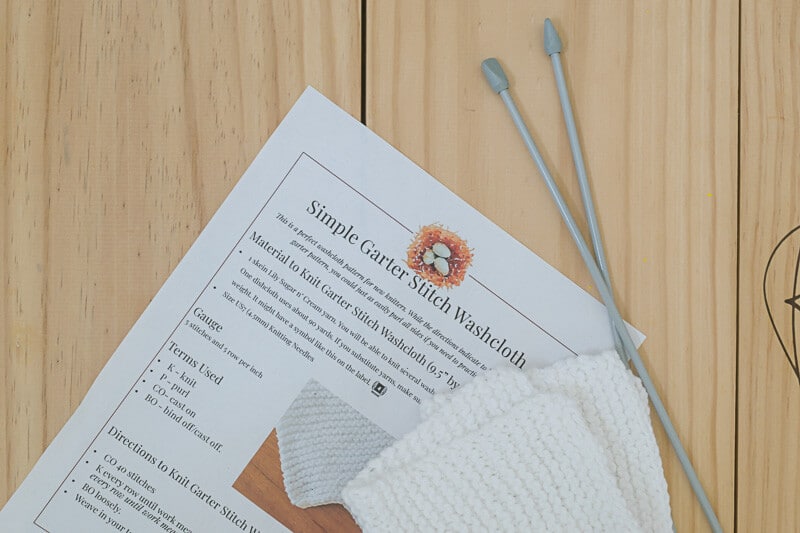
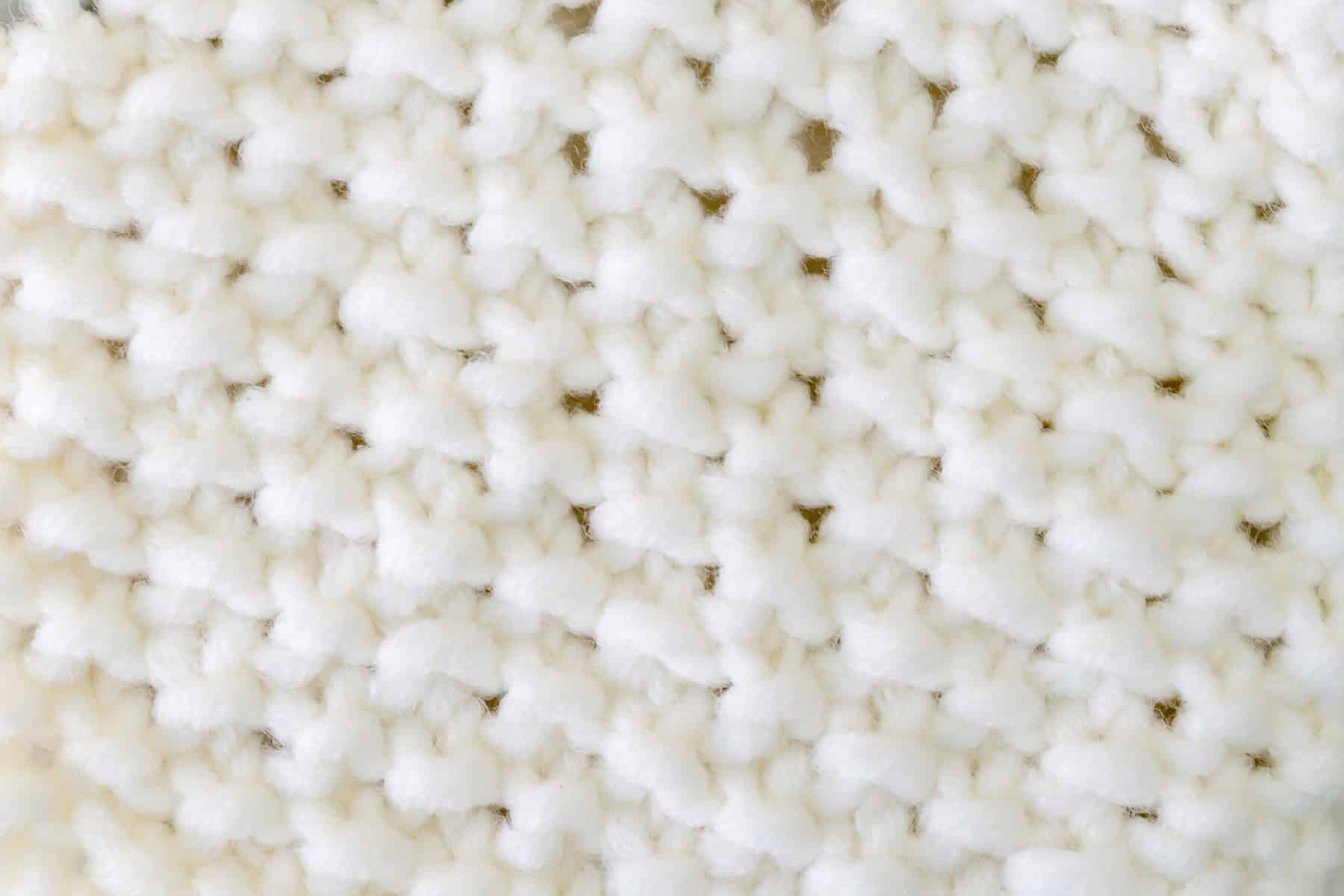
Thank you so much, Lynn, for helping all of us beginning knitters! The information is quite easy to follow, even for me!
You are so welcome Norene! Glad it is helpful, there is more coming!
Lynn you once said you used a certain yarn for your wash cloth but I forgot (naturally) could you refresh my old worn out memory. I love all you’re patterns & blankets. I do make a few mistakes but I go to this section and appreciate the refresher course (love the jams too)
Good Morning Charleen! Another early riser.
I always use Lily Sugar n Cream for my washcloths. It is very economical and holds up well to repeated washings and even bleachings.
Happy Knitting!
Hugs,
Lynn
Could you please tell me what yarn and colour you used in the Linen stitch blanket you used
Thanks I’m advance
Mary Ingraham
HI Mary, I used Berroco Remix and Remix Light in Almond.